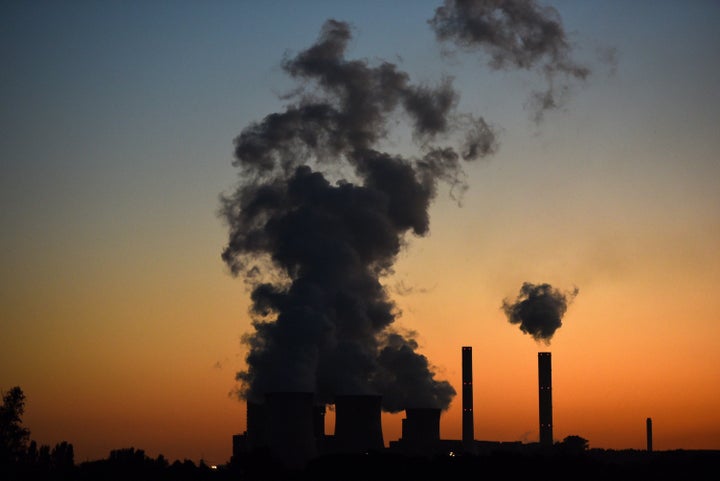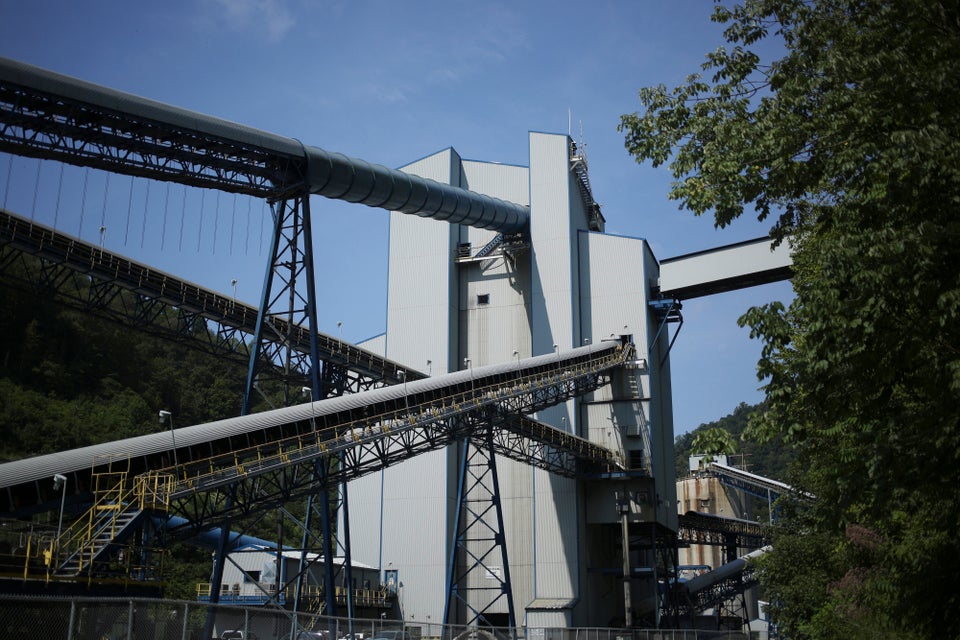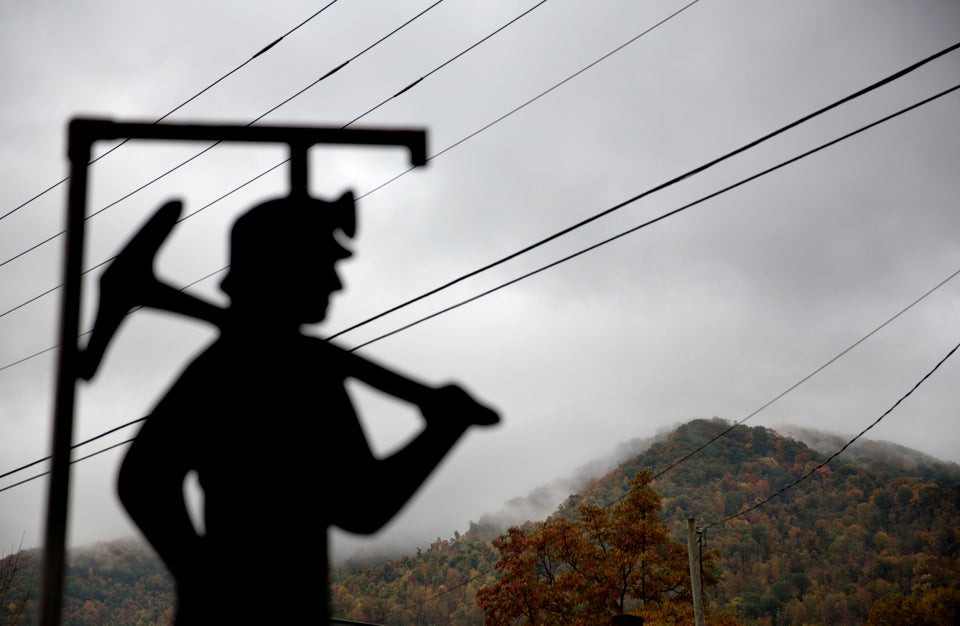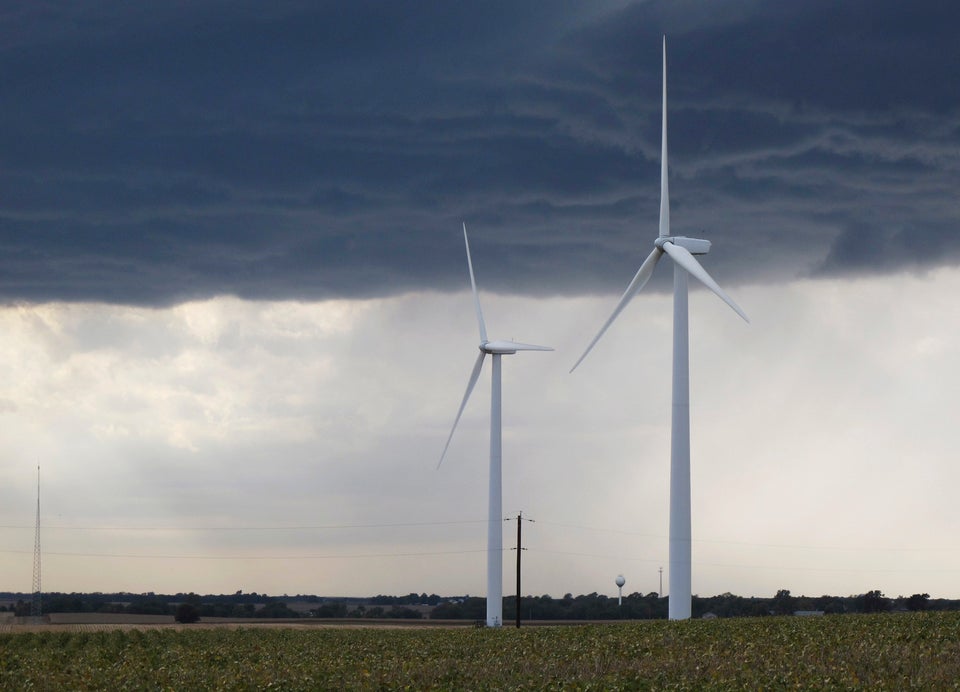Global coal use has decreased by at least 2.3 percent, which is an unprecedented level, according to a new Greenpeace study. Coal consumption leveled off in 2014, the study added, and use has continued to fall ever since.
Rising carbon dioxide levels due to coal production have been identified as a primary cause of global warming, and some countries have taken steps to reverse its effects.
The study cites a number of reasons for the decrease in global coal consumption: "renewable energy breakthroughs, [a] war on pollution and China’s transformation."
China's coal use, in particular, is highlighted in the study. The country is still adding one coal-fired power plant per week to its energy grid and has consumed half of the world's coal in years past. But, in what Greenpeace's Li Shuo, one of the study's contributors, called a "dramatic u-turn," China's coal use has already declined by 5 percent in the period between January and August this year. And coal imports have fallen by 31 percent.
This means that many Chinese coal-fired power plants will remain idle, posing a "pretty big concern from an investment point of view," Li explained.
"There's an absolute decline for the first time in history," he added. "We have preliminary data from the first ten months of this year showing that this decline is going even further. We're almost certain we will see another decline."
China is the world leader in solar and wind power investments, leading to a potential "green tipping point," according to the study.
The U.S. has also made significant progress in moving away from a dependency on coal, the study noted. Coal consumption fell by 11 percent between January and July 2015, and coal’s share of U.S. electricity generation will fall to 36 percent in 2015 from 50 percent ten years ago, as hundreds of coal plants continue to shut down across the country.
Grassroots movements have "killed the [coal] boom in its tracks," according to the study. The Sierra Club’s Beyond Coal campaign, for instance, helped shut down more than one-third of America’s coal plants since its launch in 2010.
While coal consumption in the U.K. and Germany is also plummeting, some countries still have a long way to go before they can replace coal with natural gas or renewable energy, the study said. Coal production is increasing in some EU countries because of low export costs.
India's coal production is also continuing, the study said, though total coal power generation only went up by 3.1 percent between April and August 2015. India is also "aiming for more than 10% increase in renewable energy generating capacity" starting in April 2015.
Coal output and demand have fallen in other key markets, including Japan, South Korea and South Africa, Greenpeace said.

The International Energy Agency painted a slightly different picture in a report released last December.
"Demand for coal across the globe is expected to grow by 2.1 percent each year through the end of the decade," the IEA said.
“New plants are being built in an arc running from South Africa to Southeast Asia,” then-IEA Executive Director Maria van der Hoeven said at the time of the report's release.
However, the IEA report did also find that growth in coal demand is declining -- it is slated to grow only 2.1 percent through 2019, down from 3.3 percent between 2010 and 2013.
Greenpeace believes that this report proved "a little bit contradictory to what is going on on the ground," Li said. At the time of its release, China's coal consumption had already begun to drop in a "systematic" and "sustainable" manner.
Experts contend that it may be a long road to phasing out coal production entirely. "Real progress on a global scale will require acknowledging that the world’s coal consumption will remain a growing concern for decades," Jason Bordoff wrote in the Wall Street Journal in September. Although coal use is slowing in countries like China, added Bordoff, these countries "will face a long sunset, not a sharp decline."
Over 190 countries will come together in December to discuss coal and clean energy alternatives at the 2015 United Nations Climate Change Conference in Paris.
Click here to read the full Greenpeace study.
Also on HuffPost:
10 States That Burn The Most Coal

> 2014 total electricity generation:231,062 GWh
> Coal as pct. total electricity generation: 22.5%
> Natural Gas as pct. electricity generation: 61.0%
Florida — the third-largest consumer of energy in the country — generated more than 52 thousand GWh of coal energy in 2014, 10th most of any state. However, there are no coal mining operations in The Sunshine State. All the coal burned in the state is shipped by barge and rail from other major mining states, primarily Illinois, West Virginia, and Kentucky. Florida is one of the most populous states in the country. So while the state produced the 10th highest amount of energy from coal in the country, this energy accounted for just 22.5% of the state’s electricity generation– well below the share of coal-based electricity generation nationwide of 38.7%. Natural gas is of greater significance in Florida. More than 60% of the state’s energy came from natural gas, the fourth highest share in the country.
Read more at 24/7 Wall St.

> 2014 total electricity generation:105,821 GWh
> Coal as pct. total electricity generation: 50.2%
> Natural Gas as pct. electricity generation: 10.9%
Roughly 50% of electricity in Michigan was generated by burning coal, a somewhat lower share from just a few years ago. In 2009, roughly two-thirds of electricity generated in the state was from coal. The major cause for this shift has been an increase in the state’s nuclear power output. State reactors generated more than 31 thousand GWh in 2014, or nearly 30% of the state’s electricity production, up from 21,000 GWh, or 21.6%, five years prior. While there was once a substantial coal mining operation in the state, there are no active mines currently. Michigan receives its coal by rail primarily from Kentucky and West Virginia.
Read more at 24/7 Wall St.

> 2014 total electricity generation:88,074 GWh
> Coal as pct. total electricity generation: 82.6%
> Natural Gas as pct. electricity generation: 4.5%
Nearly 83% of Missouri’s electricity was generated by coal last year. Plants burned more than 43 million tons of coal to produce nearly 73,000 GWh. Though Missouri is itself a coal producing state, only 1% of the coal it consumes is also mined there. Most of the coal burned in Missouri is shipped by freight train from Wyoming. The next biggest contributor to the state’s energy mix was nuclear power, which generated slightly more than 10% of Missouri’s energy in 2014. While many states are shifting to an increased reliance on natural gas, Missouri is not. The 3,952 GWh generated from natural gas in the state last year was only slightly higher than the 3,874 GWh generated in 2001. Missouri’s lack of any significant natural gas reserves may partially explain its lopsided energy mix.
Read more at 24/7 Wall St.

> 2014 total electricity generation:81,162 GWh
> Coal as pct. total electricity generation: 95.5%
> Natural Gas as pct. electricity generation: 0.8%
Last year, West Virginia generated the 19th most energy out of all states, producing roughly 81 thousand GWh. The state, however, generated the seventh most energy from coal, or 77,510 GWh. This amounted to 95.5% of West Virginia’s electricity generation, making West Virginia the most coal-dependent state in the country. This may not be surprising given the scope of the state’s coal mining industry. The state’s Appalachian Plateau region contains rich natural gas and coal deposits, and no state east of the Mississippi yields more coal each year than West Virginia. Roughly a quarter of the state’s coal stays in West Virginia, and the rest is shipped elsewhere to be turned into electricity. Consequently, while the state has just 0.5% of the country’s population, its resources are used to generate about 5% of total U.S. energy production.
Read more at 24/7 Wall St.

> 2014 total electricity generation:221,709 GWh
> Coal as pct. total electricity generation: 36.1%
> Natural Gas as pct. electricity generation: 23.7%
Home to the coal-rich Appalachian Mountains, Pennsylvania is one of the largest coal-producing states in the country. Pennsylvania exported nearly $1.6 billion worth of coal in 2014 alone. The state is also one of the biggest consumers of coal in the country, and much of the coal mined in Pennsylvania stays there. The state generated 80,067 GWh from coal in 2014, the sixth highest amount of any state in the country. Despite its high coal consumption, Pennsylvania has a relatively diverse energy mix. Just over 36% of the Pennsylvania’s energy came from coal, while 35.5% came from nuclear power, and 23.7% came from natural gas. Between nuclear power, natural gas, and coal, Pennsylvania is the leading energy producer in the eastern U.S.
Read more at 24/7 Wall St.

> 2014 total electricity generation:90,737 GWh
> Coal as pct. total electricity generation: 92.0%
> Natural Gas as pct. electricity generation: 2.7%
With 92% of Kentucky’s electricity coming from coal, only West Virginia relies more heavily on coal to keep the lights on. The state is the third largest producer of coal behind West Virginia and Wyoming, and one out of every four coal mines in the country can be found within the state. Roughly two-thirds of all coal mined in the state is exported. Apart from a small amount of hydroelectric energy, the state has almost no renewable energy generation at all.
Read more at 24/7 Wall St.

> 2014 total electricity generation:202,352 GWh
> Coal as pct. total electricity generation: 43.2%
> Natural Gas as pct. electricity generation: 2.7%
The fifth most populous state in the country, Illinois is a large consumer of energy. The state generated, 87.4 million MwH from 57.4 million tons of coal last year. Over the course of the last decade, nuclear power and coal have been alternating as the state’s the leading energy source. Last year, however, more than 48% of the Illinois’ electricity came from nuclear power, while 43.2% came from coal. No other state in the country derives more electricity from nuclear power, and only three other states derived more electricity from coal in 2014.
Read more at 24/7 Wall St.

> 2014 total electricity generation:134,602 GWh
> Coal as pct. total electricity generation: 67.0%
> Natural Gas as pct. electricity generation: 17.6%
Ohio is one of the largest generators of coal-based electricity in the country, with more than 90,000 GWh produced in 2014, which accounted for approximately 6% of all the electricity generated by coal in the country. Still, like the country as a whole, Ohio began to shift its reliance on coal in favor of natural gas. In 2003, 91.9% of the state’s electricity came from coal, while just 1.2% was derived from natural gas. Last year, 67% of the state’s energy came from coal, while 17.6% of the state’s energy generation was generated by natural gas. While Ohio has substantial coal mines, representing approximately 2% of the country’s total proved coal reserves, it imports approximately half of all the coal it uses, primarily from West Virginia.
Read more at 24/7 Wall St.

> 2014 total electricity generation:115,634 GWh
> Coal as pct. total electricity generation: 84.5%
> Natural Gas as pct. electricity generation: 8.3%
One of the nation’s top coal producers, about two-thirds of the coal mined in Indiana never leaves the state. Contributing to nearly 85% of the state’s total energy, coal is disproportionately represented in Indiana’s the energy mix. In 2014, the state consumed 48.9 million tons of coal, producing a total 97.7 million MwH. As in many other states, the consumption of natural gas is on the rise in Indiana. While natural gas produced only 1.9% of the state’s energy in 2004, a decade later, more than 8% of electricity in Indiana was generated by natural gas. Texas is the only state that consumes more coal than Indiana.
Read more at 24/7 Wall St.

> 2014 total electricity generation:437,236 GWh
> Coal as pct. total electricity generation: 33.9%
> Natural Gas as pct. electricity generation: 46.8%
The second largest state in the country, both by population and land area, Texas leads the nation in both energy production and energy consumption. In 2014, Texas consumed 102.7 million tons of coal, producing a total of 148.2 million MwH. Even though Texas generates more electricity from coal than any other state, coal is not the largest contributor to the state’s energy production. Nearly 47% of energy in Texas was generated by natural gas. Coal accounted for about 34% of the state’s energy mix. In order to meet the high energy demand across the state, Texas is also at the forefront of one renewable energy source. Last year, the state generated 37,400 GWh from wind, more than any other state in the country.
Read more at 24/7 Wall St.
